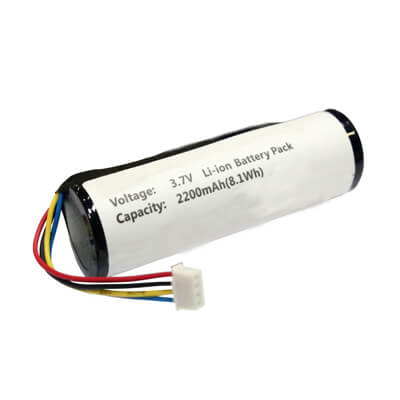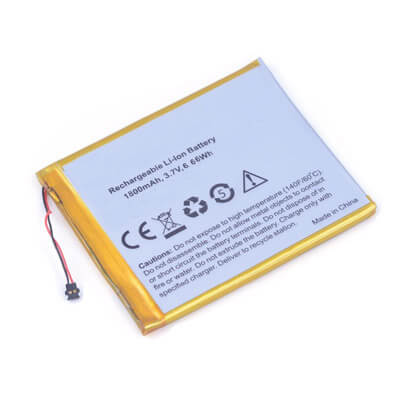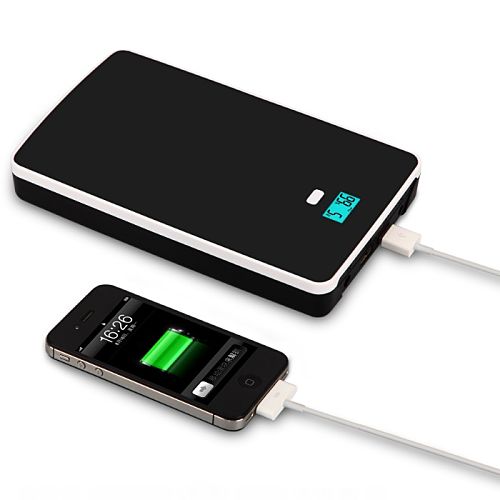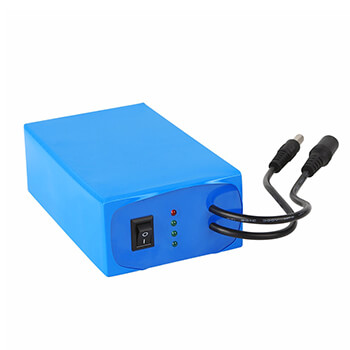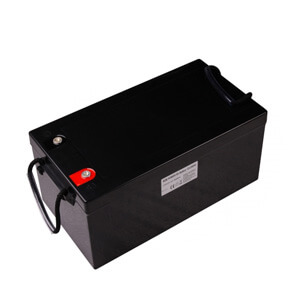Home / 18650 Battery Pack Calculator
18650 Battery Pack Calculator
People want a fast calculator to help on their custom 18650 battery design, however, since things are complicated with different voltage and capacity of each cell, we think people designing the battery packs should know some basics of lithium 18650 battery design.
18650 Battery packs achieve the desired operating voltage(ie: Total Battery Pack Voltage) by connecting several 18650 cells in series( S in short ); each 18650 cell adds its voltage. Parallel( P in short) connection attains higher capacity by adding up the total ampere-hour (Ah).
to help you further understand how it works, see below explanation:
#1 For the series connection, batteries with same(almost) voltage and capacity are connected to raise the voltage of final battery packs. The positive terminal of the first battery is connected to the negative terminal of a second battery and so on until the desired voltage is reached. The final voltage is the amount of all battery voltages added together while the final capacity(Ah) remains unchanged.
#2 While for parallel connection, batteries with same(almost) voltages and capacities are connected together to increase the capacity of the overall battery pack. The positive terminals of all batteries are connected together, or to a common conductor, and all negative terminals are connected in the same kinds. The final voltage remains unchanged whilst the capacity of the assembly is the sum of all individual cells together for such parallel design.
let’s use Samsung 18650 3.7V 2.6Ah( 2600mAh) for example.
1S1P 18650 pack that’s 3.7V 2.6Ah battery pack

2S1P 18650 pack that’s 7.4V 2.6Ah battery pack

1S2P 18650 pack that’s 3.7V 5.2Ah battery pack
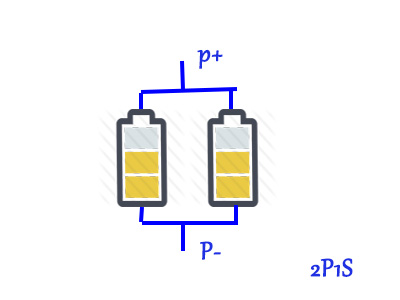
2S2P 18650 pack that’s 7.4V 5.2Ah battery pack
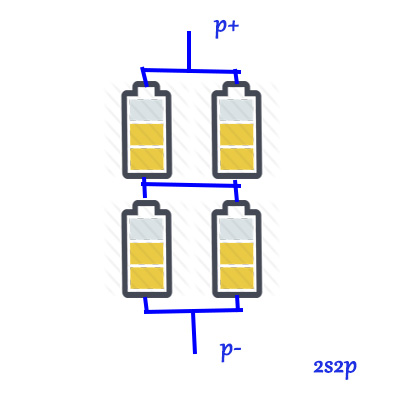
Many 18650 battery packs may consist of a combination of series(S) and parallel(P) connections.
For Laptop batteries with 11.1V 4.8Ah battery pack, it commonly has three 3.7V 18650 battery cells in series (3S) to achieve a nominal 11.1 V and two in parallel(2P) to boost the capacity from 2.4Ah to 4.8Ah. As you can find it will be a configuration is called 3S2P, meaning three cells in Series and two in Parallel.
When size limitation was considered, there is much more we need to consider, see below picture.
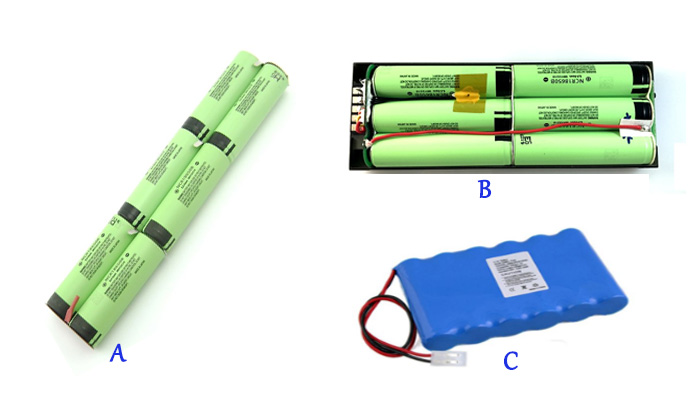
Stop here and check if you can figure them out.
and here is the answer:
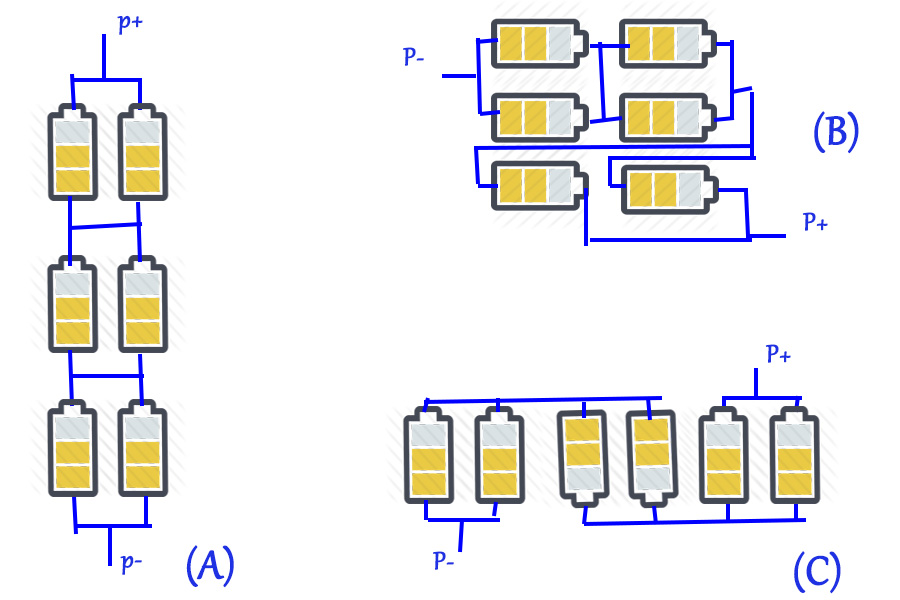
very easy, don’t you?
Let’s now calculate another 11.1V 100Ah 18650 battery pack, let’s see how many cells would be needed: 11.1V/3.7V=3, so that’s 3S 100Ah/2.6Ah=38.5 so we can use 38P(98.8Ah) or 39P(101.4Ah)
people mostly will use 3S38P so that’s 114 cells in total(3*38=114)
is all clear to you now?
What If I drop the mAh rating from 2.6Ah to 2.2Ah(which is more common for 18650 type batteries), I now need 135 cells in total with 3S45P configuration to get the same total capacity of 11.1V 100Ah(actual capacity is 11.1V 99Ah).
PS: 11.1V/3.7V=3 100Ah/2.2Ah=45.5
The calculate is still on—
What if we use Lifepo4 18650 cells(which are rated 3.2V 1.5Ah)? we would need 264 cells in total with 4S66P configuration to get the same total capacity of 11.1V 100Ah(actual capacity is 12.8V 99Ah).
PS: 11.1V/3.2V=3.5 people normally use 4S to boost voltage,
100Ah/1.5Ah=66.6
Want More Details: Download our battery design ebook.
Lithium Battery Design Design ebook (2M, 20 pages, PDF)
Le’ts roll the ball on.
what will happen if Watt/Hour(Wh in short) are involved?
If you have, for example, 2Ah lithium ion 18650 battery cell then each of those stores 7.4Wh (3.7V*2Ah=7.4Wh) of energy and you need 136 of them (1000/7.4 ~ 136) for a 1kWh battery. 136 in parallel will give you a 1kWh battery with a nominal voltage of 3.7V.
If you want higher voltage, and you probably will, you have to put them in series as well. 7s is a typical minimum for a Home UPS battery. 136 cells can’t be evenly distributed over 7 packs in series, you then need 140 cells for a 7s20p setup.
All of above are just examples, there are plenty other possibilities. It would be very hard to put this into an automatic calculator which then provides meaningful results because almost all of this depends on variables the calculator doesn’t know or that have to be put in in the first place. It is easier to calculate this yourself.
Product information
Contact Info
- Mail : sales@dnkpower.com
- Tel : +86 755 36827358
- Mob:+86 189 4877 2006
- Fax : +86 755 61605250
Battery Design Guide
News updates
Ebike Battery Pack Calculator
The ebike battery pack calculator is fairly simple, using the following Fomula:
Battery Capacity Required (Wh) = Power Demand per distance traveled (Wh / mile or km) x Typical Distance Traveled (miles or km)
Calculation ebike battery would be quite complex as the motor output is changing all the time,ie related watt-hour demand (Wh / mile or km) of the motor is changing all the time, to list a few factors below:
A Light Driver VS heavy player
B Flat Terrain VS Hilly Terrain
C Continuous Riding VS Frequent Start (Start consumes more power)
D Summer VS Winter

To help less hassle for your calculation, below is our table for your general reference
Constant Riding, 9-12 Wh/km (14-20 Wh/mile)
Frequent Start, 14-20 Wh/km (22-33 Wh/mile)
Let’s use actul example to explain
For a 48V ebike that we want a minimum of 30 km riding range.
that’s 10 wh/km* 30km=300wh (it ranges from 9-12wh/km, we here use 10wh/km as example)
we already know that
Watt-Hour (Wh) = Amp-hours (Ah) x Volts (v)
So that’s 300Wh/48V=6.25Ah
Is this clear for you for your ebike battery pack calculator?
Drop us messege if you have new inquiries
FAQ on 18650 Battery Pack Calculator
- What is the most important factor to consider when designing a 18650 battery pack?
- We think the first important factor to consider battery size constraint, size limitation will decide which battery cell to choose from, a 18650 cell is a standard battery cell with 18(C)*65(H)mm in size, people will need to choose lithium polymer battery cell if size limitation of thickness less then 18mm like 10mm.
- Is there any way we can calculate a battery pack cost on myself?
-
Yes and No:
For the Yes part, for battery packs that draw working current less than 5A (like power bankUSD/2.6Ah Korea cells. plus 20%-30% cost (PCM and assembly cost )
For the No part, for battery packs that is quite thin(less than 18mm) or require high discharge current, like ebike or EV, will first need to confirm which cell is the best fit and then check what BMS is required for the battery packs. All are not clear and will result in a big difference in pricing.


